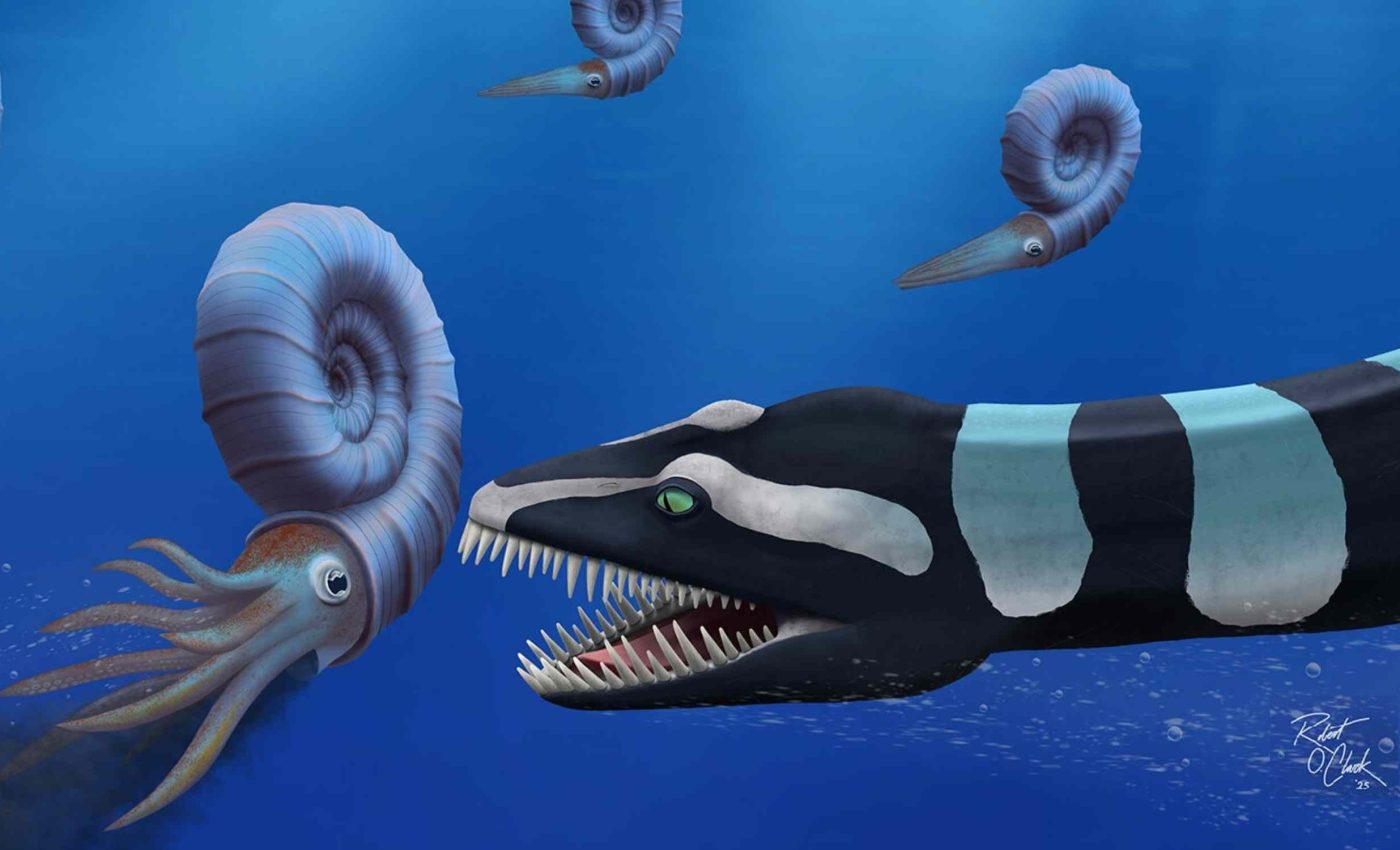
Very rare and predatory marine reptile identified as a completely new species
A fossil found on Vancouver Island in 1988 looked like a typical long‑necked marine reptile, yet every expert who studied Traskasaura sandrae left with new questions.
Scientists have now confirmed that the 39‑foot creature, which lived about 85 million years ago, represents an entirely new species with a hunting style never before documented in its family.
“It has a very odd mix of primitive and derived traits,” said Professor F. Robin O’Keefe of Marshall University, whose group named the predator Traskasaura sandrae. He led the team that solved the puzzle.
Digging up Traskasaura sandrae
The first bones came from the Haslam Formation, a shale layer laid down when shallow seas covered what is now British Columbia.
Community volunteers spent three summers freeing the skeleton, which included more than fifty tightly linked neck vertebrae.
Additional material surfaced during highway construction and a separate riverbank dig, bringing the total to three individuals.
Together they revealed a full neck, torso, limbs, and the crushing teeth that tipped researchers off to an unusual feeding strategy.
Neck was built for ambush
Most elasmosaurs relied on sideways sweeps to grab fish, but the team noticed that the neck joints of Traskasaura sandrae allow smooth downward flexion.
That range, paired with robust shoulder muscles, supports the idea that the reptile hovered above prey before plunging like a heron.
Each cervical rib points slightly forward, a feature seen only in a handful of southern-hemisphere relatives. The forward slant stiffened the neck during a rapid dive, preventing whiplash while the head shot toward a target below.
Clues in the shoulders and teeth
The glenoid cavity, where the humerus meets the body, faces partly downward instead of purely sideways. That tilt aimed the paddles to push water straight back and down, giving the animal a quick vertical burst.
“Its teeth were ideal for crushing,” explained O’Keefe. One preserved crown still holds fragments of broken shell.
Heavy conical teeth, round in cross‑section and ringed by deep grooves, suggest a diet of shelled ammonites common in the same rocks.
Life in the late Cretaceous pacific
During the Late Cretaceous, Vancouver Island sat around the latitude of present‑day Oregon, edged by warm fore‑arc basins teeming with mollusks and early sharks.
Ammonite fossils from the Pachydiscus group dominate these beds, matching the menu implied by the reptile’s dentition.
The sea also hosted sleek mosasaurs and blade‑toothed birds, yet Traskasaura filled a separate niche: the slow‑motion stalker that attacked from above.
Its 12‑foot paddles produced short bursts rather than long chases, conserving energy in nutrient‑rich but cooler northern waters.
Rewriting the plesiosaur family tree
Although classified as a plesiosaur, the newcomer sits near the base of the elasmosaur branch. The phylogenetic work by O’Keefe and colleagues shows it split early from southern cousins such as Aristonectes yet later evolved similar shoulder joints, an example of convergent evolution.
That finding warns against sorting species by one standout trait. Neck length alone once grouped nearly every long‑necked reptile together, but limb and girdle details tell a more nuanced story about how different lineages hunted and swam.
Traskasaura sandrae anatomy
The first fossil puzzled paleontologists because it blended features usually found in different branches of the plesiosaur family.
Its skull and teeth matched primitive species, but its shoulders and forelimbs looked like more specialized animals from the southern hemisphere.
Researchers initially hesitated to call it a new species because many of the bones were fragmented or eroded. It wasn’t until a second, better-preserved skeleton was uncovered that scientists could confidently identify the creature’s unique traits and confirm its identity.
What the find means today
The Courtenay and District Museum now displays the best skeleton, giving British Columbia a provincial fossil with unmistakable local flavor.
School groups can stand beside vertebrae longer than their hands and imagine a reptile that prowled the same coastal waters where orcas swim.
“Our new research finally solves this mystery,” added O’Keefe.
Beyond regional pride, the study highlights how community collectors, careful curation, and modern scans can unlock decades‑old mysteries. The creature’s hybrid anatomy will keep fueling debates about function and evolution for years.
How Traskasaura sandrae got its name
The genus name Traskasaura honors Michael and Heather Trask, the father-daughter team who found the original fossil along the Puntledge River in 1988. The name combines their surname with the Greek word sauros, meaning lizard.
The species name sandrae was chosen in memory of Sandra Lee O’Keefe, a Pacific Northwest native and advocate for breast cancer awareness.
This tribute mirrors the legacy of Elizabeth Nicholls, a paleontologist who helped identify the fossils in 2002.
The study is published in the Journal of Systematic Palaeontology.
—–
Like what you read? Subscribe to our newsletter for engaging articles, exclusive content, and the latest updates.
Check us out on EarthSnap, a free app brought to you by Eric Ralls and Earth.com.
—–













